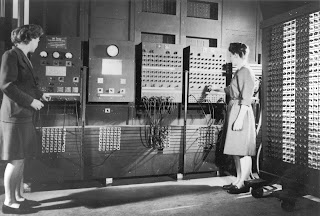CSI convention memories
My first convention was in
Chicago, in 1990. The second was in San Diego, in 1991. I had never been
to California before, and I discovered why everyone wants to live
there. My third convention was in San Francisco, in 1994. It was the
first time I brought my family along, and since then, my wife has
accompanied me each time, and one or both of our children - and their
spouses - made it to a few more.
Many of today's CSI members missed the days when we had fabulous hospitality suites and parties that went on into the early hours of the morning. The education sessions and exhibit hall have been much the same until the last few years, but there were a lot more extracurricular activities many years ago.
And now, my first convention. The year was 1990. The Institute president was S. Steve Blumenthal. The president of the host chapter was Gary Betts, who later went on to be president of the Institute.

- Keynote speakers: Studs Terkel, Willard Scott. These names don't mean much today, but they were big names then. Terkel was an author, historian, actor, and broadcaster, who had been blacklisted during the McCarthy era. Scott also was an author and actor, as well as a comedian. And, he was the creator of the original Ronald McDonald, and played the part in 1963.
- Preconvention tours: Underwriters Laboratory, "Chicago Architecture Seen From the Chicago River".
- Hotel (double occupancy): Chicago Marriott, $113, Hyatt Regency, $110, McCormick Center, $106; Lenox Suites, $109.
- Interesting programs: Editing On-Screen, Integration of CAD Drawings and Specifications; CSI Format for Mechanical and Electrical Specifications.
- Registration: $160.
- Travel, from Minneapolis: $75, motor coach direct to hotel, refreshments included.
A brochure produced by the Chicago Chapter offered some interesting statistics about CSI conventions. According to the brochure, the third national CSI convention was held in Chicago in 1959; there were 100 exhibit booths. In 1970, Chicago again hosted the annual convention, this time with 256 exhibit booths. In 1990, the convention returned to Chicago. For the first time, the number of exhibit booths exceeded 1,000, and a new attendance record of 10,650 was set, a record that stands to this day.

I had been a CSI member for three years, but this was my first trip to the annual convention. The Minneapolis-St. Paul chapter set up a package deal including both lodging and transportation, and we sent a busload of delegates. We left at at 7:30 a.m., 28 June, and returned about 1:00 a.m. Monday morning, after the banquet.
The show was only three days, running from Friday, 29 June through Sunday, 1 July. As a newbie specifier, I had a hard time deciding which programs to attend. The exhibit space in McCormick Place was unbelievable! As I started down the first aisle, I began stuffing my shoulder bag full of literature. I soon acquired another bag; by the time I got to the end of the first aisle, the bags were bursting, and I could hardly drag them around the corner. Fortunately, someone told me the manufacturers would send information by mail.

The two big Saturday night events were hosted by Sherwin-Williams and Dover Elevators. The Sherwin-Williams event was a dessert party that filled an entire ballroom; chocolate-dipped strawberries were featured, and appeared on the invitations, which included a metal pin.

CSI's annual convention is always a great place to find out what's new in construction products, to learn from experts, and, just as important, to renew old friendships and find out how other members are trying to solve the same problems we face every day.
As much as we like to be efficient and schedule all of our meetings, there are times when a chance encounter will lead to more knowledge and more contacts. I liked the random nature of the exhibit floor. I would mark up a map to make sure I get to specific booths, but otherwise I just wandered through the aisles, wondering what I'd see around the next corner.
There's been talk about the impending death of trades shows, but it's hard to imagine a replacement. How else could you see so many products in a short time, talk with the manufacturers' reps, and hold the products in your hands? Working online can be faster, but talking with an unknown person in an unknown location does nothing to build relationships. It's easy to say that that doesn't matter, but when you have a problem, it's good to be able to call the go-to guy you know, who will be much more willing to take the time to help you figure out how to find a solution.







